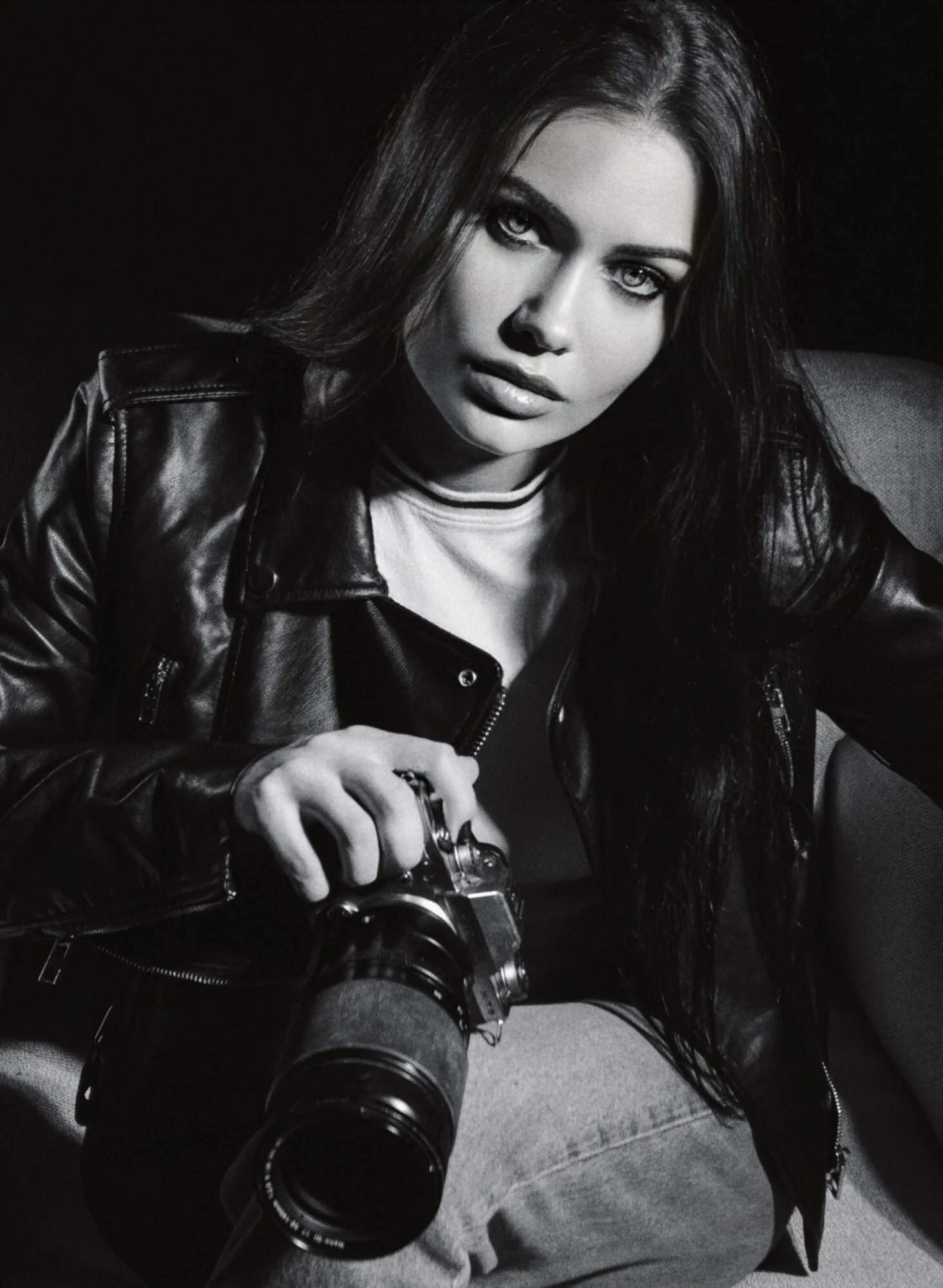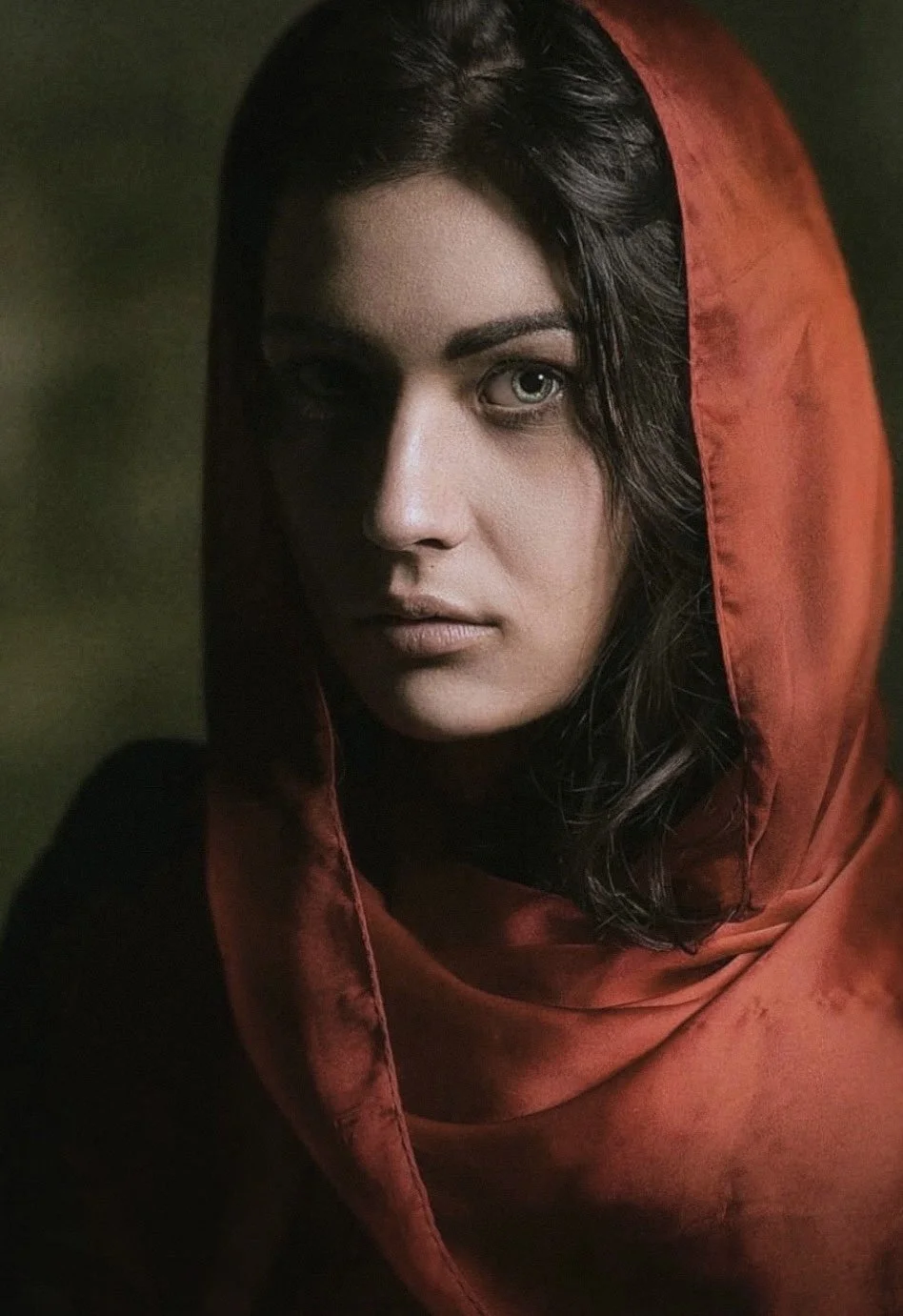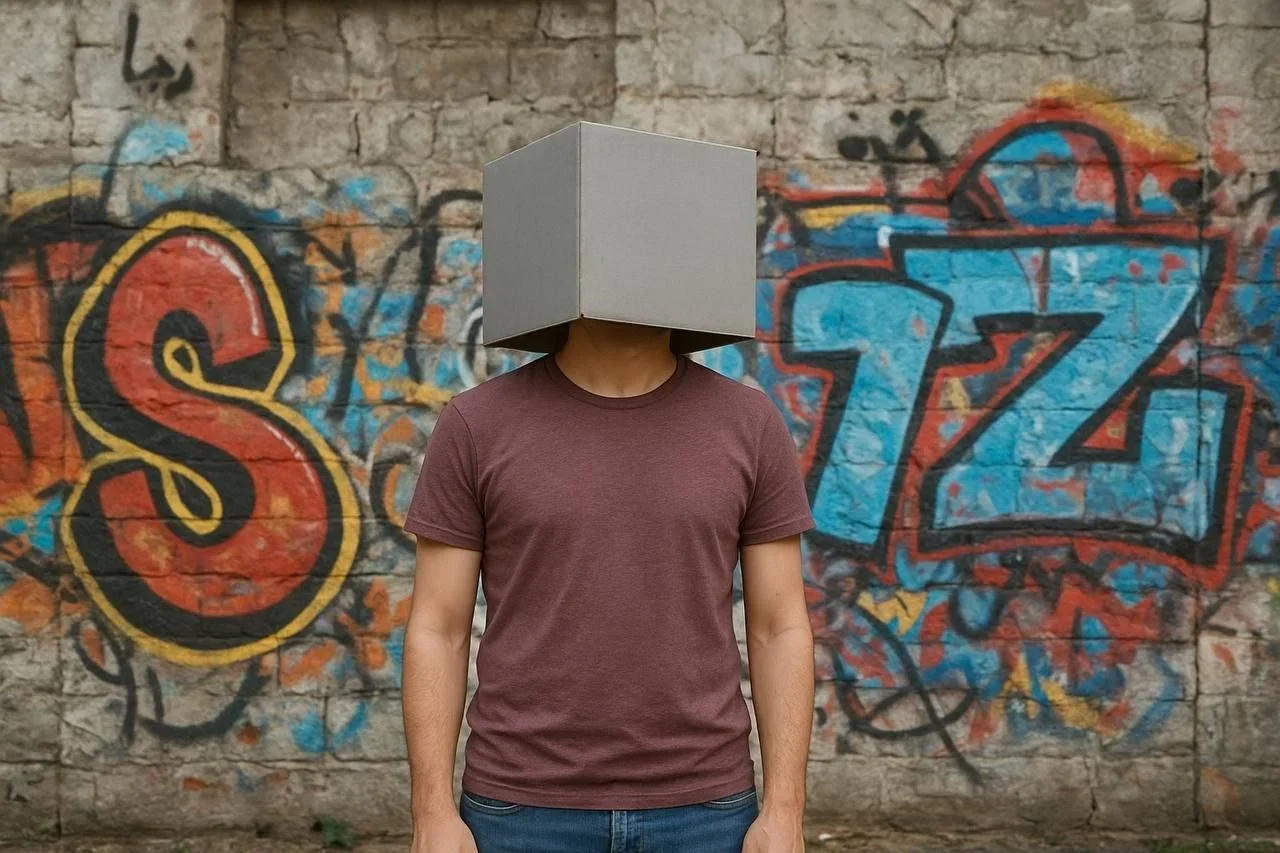10 Questions with Elizabeth Glazko
Elizabeth Glazko is a Los Angeles–based photographer and visual artist specialising in cinematic portraiture and stylised visual storytelling. With over a decade of experience, she has built a practice that bridges the worlds of film, fashion, and fine art.
Originally trained in graphic design, Elizabeth began her career working on movie sets and fashion campaigns, where she honed her sensitivity to light, framing, and post-production. Her dual expertise as both photographer and retoucher allows her to craft images with exacting detail and cohesive visual tone.
She frequently collaborates with musicians, actors, and athletes, creating portraits that straddle the line between the real and the imagined. In recent years, she has expanded into filmmaking, evolving her practice toward motion while staying grounded in her distinctive cinematic aesthetic.
Elizabeth Glazko - Portrait
ARTIST STATEMENT
Elizabeth Glazko sees the world through a cinematic lens. For her, every gesture, shadow, and fleeting glance feels like a frame from an unwritten film, pregnant with story, tension, and unspoken emotion.
Rather than chasing spectacle, her photographs linger in quiet intensity. She is drawn to in-between moments: a solitary figure at dusk, the hush before a performance, a fleeting look between strangers. These images don’t simply document, they suggest, inviting the viewer to imagine the narrative that surrounds them.
Wolfilm, her ongoing body of work, reflects this sensibility. It is a personal archive of moments suspended between memory and fiction, shaped more by feeling than fact. Light becomes the connective tissue; mood, the narrative.
Elizabeth’s aim is to create images that aren’t just seen, but felt, photographs that live like memories: vivid, elliptical, and deeply human.
Dark Solitude, Digital, 2024 © Elizabeth Glazko
INTERVIEW
Let’s start with your background. You originally trained in graphic design before moving into photography. What drew you to make that transition, and how does your design background still influence your photographic work today?
I’ve been into photography for over a decade. Photography never felt easy. It’s been a long journey, full of challenges. I believe my education in the arts has played a significant role in my success as a photographer. Photography and graphic design are deeply connected, both are forms of visual art that follow the same fundamental principles of composition, colour theory, storytelling, and balance.
From an early age, I learned to draw, which laid the foundation for my artistic eye. Later, graphic design refined that vision, teaching me how to shape and present what I see in a more intentional way. It trained me to recognise beauty in the world and to capture it with clarity and emotion.
I don’t see myself as just a photographer, I consider myself a visual artist. Photography, to me, is a form of art. Every photograph begins with light, it’s my primary tool. I don’t just capture images; I draw them through it. Every image that I take goes through a detailed and thoughtful post-production process. Not because I’m dissatisfied with the original capture, but because I want to transform it into something more expressive, a finished work of art that reflects both my technical skill and creative vision.
Each photograph I make is the result of time, intention, and emotional investment. It’s not just a picture, it’s a crafted expression of how I see the world.
Painful Memory, Digital, 2024 © Elizabeth Glazko
Your work is described as “cinematic portraiture.” What initially attracted you to this style?
Since childhood, I’ve been deeply fascinated by cinema. I’ve watched over a thousand films, and this lifelong love for movies has profoundly shaped my vision as a photographer. Film art didn’t just inspire me, it transformed the way I see the world. I began to view every photograph as a movie frame, each one holding a hidden story.
This perspective didn’t come to me overnight. It took years of exploration, experimentation, and dedicated practice to develop my own photographic style. Along the way, I learned techniques used in filmmaking, including colour grading, an essential part of film post-production. My creative approach is rooted in the language of cinema.
Having worked on movie sets and fashion campaigns early in your career, what did those experiences teach you that still shapes your practice?
Throughout my photography career, I’ve explored a wide range of genres, including portraiture, travel photography, studio work, fashion campaigns, and photographing on movie sets. Among them all, studio photography remains my favourite. Fashion photography, often rooted in the studio, captivated me with its beauty and perfection. Working with professional models helped me refine my ability to direct people in front of the camera, especially when working with non-professionals, which can be far more challenging. It also gave me extensive experience with controlled lighting.
And then there were movie sets, where my love for filmmaking and photography naturally came together. I had the opportunity to document the filmmaking process up close, capturing the behind-the-scenes moments of cinematic creation. It felt like coming full circle, photographing the very art form that first inspired my journey as a visual artist.
Distrust, Digital, 2016 © Elizabeth Glazko
Ice And Fire, Digital, 2025 © Elizabeth Glazko
Your ongoing body of work, Wolfilm, blends memory and fiction. What inspired this project, and how do you decide which moments to capture and include?
Wolfilm is the name of my creative brand and photography project, dedicated primarily to artists and other creatives. Its mission is to support and uplift creative communities across the U.S., helping them grow both as professionals and as unique individuals. Through photography and filmmaking, I aim to create powerful, meaningful content that showcases their talent, spirit, and stories.
Wolfilm blends memory and fiction; it’s where reality meets imagination. I capture artists in their most authentic moments, with real emotion and unstaged presence. But I also create cinematic illusions, crafted stories that entertain and inspire, much like narrative films. Whether documenting truth or constructing fiction, my work is always rooted in visual storytelling, created to celebrate the artistic soul.
You often collaborate with musicians, actors, and athletes. How does working with creative people from different fields influence your approach to portraiture?
Yes. I often collaborate with creatives from all walks of life, actors, musicians, and even individuals from the world of sports, like motorcycle racers and martial artists. These connections come naturally, as I’m deeply immersed in these worlds myself, and I tend to attract people who share similar passions.
They’re drawn to my photography style, my vision, and the way I tell stories through images. In turn, each person I meet leaves an impression on me. Their life stories, their resilience, and their individuality inspire me to push my work further. Their unique personalities and striking presence not only influence me, they resonate with others as well, creating a ripple effect that reaches beyond the frame of a single photograph.
Post-production is an integral part of your process. How do you see the relationship between shooting and retouching in crafting your final images?
Absolutely. Post-production is essential to my work; it’s a defining part of my photographic style. I use a variety of editing techniques to shape the final image and achieve the aesthetic I envision. Photography isn’t just about pressing the shutter. It involves elements like directing, lighting, and storytelling. That’s just the first half of the process. The second half takes place in post-production, through colour grading and retouching, done in specialised software designed for digital photography.
Skid Row 1969, Digital, 2019 © Elizabeth Glazko
Oblivion, Digital, 2024 © Elizabeth Glazko
In recent years, you’ve expanded into filmmaking. What new challenges or creative opportunities has motion offered you compared to still photography?
That’s right. I was accepted into a filmmaking program at a film school in Los Angeles. I chose to step into the world of cinema not only to elevate my photography skills but also to explore this deeply tempting visual art form I’d always been drawn to.
A photograph is a promise of something that will never happen, because it captures a single frozen moment. A motion picture, by contrast, is a series of photographs in motion. In one second of film, there can be 24 or more still images, called frames. Photography and filmmaking are intrinsically connected. I see filmmaking as an advanced, multi-layered form of photography. It adds elements like directing, acting, storytelling, cinematography, and editing. In photography, those elements exist but in a simpler form.
I direct my photoshoots like a filmmaker, guiding my subjects, often actors, to express genuine emotion. Sometimes I capture real emotion in action; other times I create emotion through my interpretation. Behind every image lies a story, either of the person I photograph or a story I choose to tell through them.
Post-production plays a vital role in both photography and cinematography. I use editing and cinematic colour grading to evoke mood and meaning. Lighting, too, is absolutely essential, perhaps the most important element in visual arts like photography and filmmaking. It’s what allows me to “paint” with my camera. With light, I can shape scenes, draw emotion, and give my images their signature atmosphere.
Lastly, looking ahead, are there new themes, mediums, or collaborations you’re excited to explore in your future projects?
The future is always uncertain; we can imagine it, but never fully predict it. Still, I feel excited and optimistic about what lies ahead. My goal is to grow and evolve my creative business and to do my best to bring meaning and joy to others through the work I create.
I hope to meet more inspiring creatives and professionals from different industries, including well-known artists and public figures. I want to continue crafting unique photographic scenes, exploring new themes, and diving deeper into the world of film. For me, it’s all about constant growth, artistic discovery, and using my vision to connect with others.
Artist’s Talk
Al-Tiba9 Interviews is a curated promotional platform that offers artists the opportunity to articulate their vision and engage with our diverse international readership through insightful, published dialogues. Conducted by Mohamed Benhadj, founder and curator of Al-Tiba9, these interviews spotlight the artists’ creative journeys and introduce their work to the global contemporary art scene.
Through our extensive network of museums, galleries, art professionals, collectors, and art enthusiasts worldwide, Al-Tiba9 Interviews provides a meaningful stage for artists to expand their reach and strengthen their presence in the international art discourse.





















